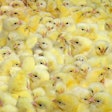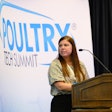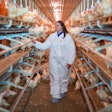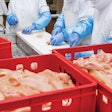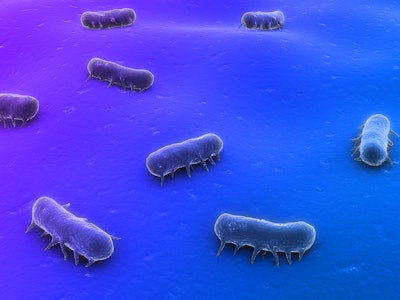
A deep serotyping technology using isolation independent technology CRISPR-SeroSeg could help poultry producers identify all Salmonella serovars in their supply chain and prevent the bacteria from entering the processing plant.
Standard Salmonella isolation techniques often only identify one or two serovars, even if there are more serovars present, said Kaitlin Karschner, Ancera Technical Product Manager, at the 2023 Poultry Tech Summit. This means that there could be serovars prevalent on the farm that producers are unaware of, which will ultimately enter the processing plant.
However, a platform that uses CRISPR-SeroSeg, a PCR-based technology, continuously surveys Salmonella prevalence and can differentiate multiple serovars in each sample collected. Knowing each Salmonella serovar, including those of human health concern (HHC), can help producers pinpoint the risk in their supply chain and develop new prevention methods.
According to Ancera’s website, the technology identifies between two and eleven serotypes on average per sample.
The technology allows producers to find the source of their Salmonella issue and gain a deeper understanding of the evolution of serotype profiles across their farms, which will lead to improved prevention strategies, she explained.
The platform helps producers answer questions such as “Are my current interventions working?” and “What is my Salmonella risk by complex, farm or house?” explained Karschner. Additionally, Karschner added that the technology would help producers adhere to the U.S. Department of Agriculture’s (USDA) proposed framework, which would require poultry producers to test incoming flocks for Salmonella.
How it works
After non-invasive fecal samples or boot swabs are collected at specified locations, the samples are sent to Ancera’s laboratory.
The samples are analyzed using deep serotyping technology, which assesses the genetic signatures found in the spacer regions of DNA known as CRISPR1 and CRISPR2. After the CRISPR data is collected, analytics identify the present serovars and create reports according to what the producer requests.
These reports allow producers to track serotypes, categorize risk levels, highlight changes in Salmonella over time and identify potential food safety risks on the farm.









